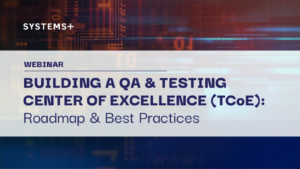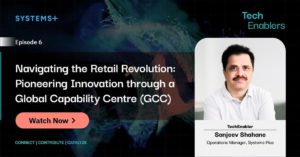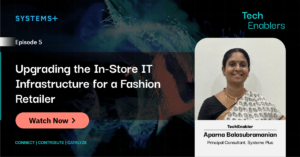Realizing the potential of customer data to drive business success with CDP


With
Head of Strategic Alliances and Partnerships at
Treasure Data EMEA & India
Enabling digital is leveraging technology to create new business models, new products and services, and new strategies and ultimately drive business growth.
The podcast series explores how CIOs can capture opportunities by looking at and beyond technology and data to propel their organizations into the digital forefront.
The podcast series looks at how independent thought leaders and visionaries from the tech industry across the globe bring their ideas to scale within the business world, sharing innovative, path-breaking insights with our listeners.
We interview experts on trends and best practices for IT leaders. Sapan Choksi, CEO at Systems Plus, talks monthly with tech thought leaders on 21st century business topics like innovation, digital transformation, AI, and automation.
Treasure Data is a global leader in Customer Data Platforms (CDP) and enterprise data management. Providing the ability to aggregate and translate massive volumes of scattered and siloed data. Flexible, tech-agnostic, and infinitely scalable, Treasure Data provides fast time to value even in the most complex environments.
Systems Plus is a Technology partner of Treasure Data helping drive value with the product by providing implementation, adoption, support, maintenance, and enabling innovation.
As a Treasure Data Technology partner, we help design unique enterprise architectures, allowing your customer data to go the extra mile and persist through every step of the customer journey.
Treasure Data partners with best-in-class Independent Software Vendors, helping you maximize your CDP investment and deliver extraordinary customer experiences.
Jonathan is a well-connected problem solver, drawing on over 20 years of experience within the technology industry covering all aspects from infrastructure and operations to management and strategy. Having worked across client, agency, and vendor sides, he has developed a unique understanding of digital and the skills required to deliver in this ever-changing fast-paced world.
As a highly organized and self-motivated strategic thinker, he utilizes his blend of abilities and understanding of the digital agency landscape across EMEA to drive high-value strategical relationships with a proven track record of creating and executing channel strategies across multiple regions.
Sapan Choksi 0:00
Welcome everyone to enabling digital systems plus plus Podcast Series. Today, we have a really interesting topic that we're going to discuss something that's becoming really hot in the marketplace, which is a customer data platform. Many of you probably don't know what a customer data platform or CDP, as many like to call it is. And today, we actually have a fantastic person who is an expert in the area, and is going to be sort of educating us on it, and also giving us a lot of tips and tricks in terms of what one should look for etc. So today, I have Jonathan von Abo from Treasure data, who is going to be joining us. Jonathan, welcome.
Jonathan von Abo 0:50
Hi Sapan, Thank you very much. Thanks for having me.
Sapan Choksi 0:52
Great to have you here. It's great to have yourself, Jonathan. Actually, you know, before we sort of dive right in, we'd love to hear a little bit about yourself, your background, how you got into this space, and then we can go from there. So you know, want to just tell us a bit about yourself?
Jonathan von Abo 1:07
Sure. I try not to make it a super long story. But I guess I've been involved in data since the beginning of my career. I started off my career building databases, and sort of moved through IT management, technology management within organizations and then moved into agency world where I used to design an architect systems people, in more recent years have been more focused on business development. So working with partnerships to help build out these solutions for customers. And I guess, in my journey through agency and Oracle, and various different other platforms I've ended up at CDP, I think, right as it was really sort of reaching its crescendo, or well, the journey to the crescendo has just begun, I guess. So yeah. So currently, I head up business development for Europe and Africa. And I've been here for about two and a half years. It's been an incredible journey so far.
Sapan Choksi 2:11
Fantastic. So I guess let's answer the first question, which a lot of people have is what is exactly a CDP.
Unknown Speaker 2:21
That's another one that we could probably spend a good hour on.
Sapan Choksi 2:24
It’s an non end question I know. You can give us a layman's version, and then we, you know, we'll talk a bit more to it.
Unknown Speaker 2:30
Sure. Yeah. You know, CDP, I think, can be a lot of things, a lot of different people. I think the CDP market is not currently helping this. There's a bit of convergence on the term, so to speak. And I think, you know, any business or any technology that has touched customer data is now a CDP in some flavors, some version. But ultimately, I mean CDP was meant to do for an organization is fairly simple. In terms of its approach, and certainly, it's the way we've approached it, I think CDP Institute's have a very good and very sort of vanilla version of it. But a bit ultimately, without getting too technical, really, what a CDP is trying to do for an organization is provide that thing that we've always been chasing that 360 customer profile, that's, you know, it's certainly something that I've been talking about, since the beginning of my career is how do we get it all in one place. And really, from an architecture perspective, if you think about it, it's about coming into an organization, finding all of the data you have about your customers, irrespective of where it resides in which format, what velocity is being created, to bring it central into the organization to unify that data. So to make it usable, to create that single profile your customers, and then give the organization's departments, divisions with maybe marketing or whoever else, the ability to utilize that data in their day to day job, right. So whether that's creating segments for marketing or for personalization on the website, or whether it's for driving loyalty, whatever that might be, that data needs to be available to be distributed. And, , as we see across organizations, all tools and all pain points and touch points are being commoditized. So, you know, organizations are very complex. I think we did a study, it was like, most enterprise organizations have 30 to 50 tools that they utilize. And that's probably on the conservative side, it was probably more that they used to engage their customers, which is creating the issue in the first place. And obviously, then, once you've collected all this data , you're utilizing it to drive engagement. It's about understanding how the engagement the efficacyof it And that's more about the analytics, business intelligence that you can derive from your data. Those I think are the probably the four key elements or five key elements of a CDP and what it should be doing for your business.
Sapan Choksi 5:15
That is actually very helpful. You know, the recent, I think, touched on it, you know, these days, there's a lot of providers who pull the word TPP around. And one of the things that I see a lot of people get mixed up with and think it's, CDP is more customer experience. And I know customer experience is a very different thing, and CDP is probably an enabler to it. But when, when you think about the customer experience side, what's the CDP side? You know, how do you help your customers distinguish the difference? And, how does one go about building customer data strategy versus a customer experience strategy? Which is something very different if I'm not mistaken.
Jonathan von Abo 6:04
Yeah, I think you hit the nail on the head with your opening statement there, I don't think it's possible to really separate these anymore. I think customer expectations have moved on. So fast. and it's all being accelerated by Amazon and things like that with the convenience of the way it shops the way they understand you because it's almost like a closed network. And I think for other brands to compete. That kind of understanding to drive how you engage is becoming more and more prevalent. And so I think, a lot of our conversations that we have with customers are because they're doing a digital transformation, which is looking at CX and a CDP is a component of driving that, right? So, CDP is, I guess, I liken it to the plumbing of a building, right? It’s not the sexy stuff, it's not the stuff that you want to want to be looking at, or thinking too much about. But without it, it doesn't work, right? And so, it’s really about connecting all of the things. And if you think about what a customer experience is, especially nowadays, the ability to engage with the customer in the moment, understanding what they need at that specific time, and providing that to them. You cannot do that without understanding that user’s journey throughout your, brand and all of the touchpoints that you have with that person in real-time. So, to me, your CX strategy and data strategy are almost one in the same right, one drives the other. And so, , these big digital transformation projects, which we are finding ourselves a part of. And again, it's a component of a much bigger, much wider. So I think CX strategy is obviously very broad. But I think, it should definitely contain an element of data within it to really be able to drive the outcomes that organizations are trying to.
Sapan Choksi 8:04
Oh, that's perfect. So I guess, if I were to think about CDP, as let's say, a retailer, or if not a retailer, or maybe up automatic Lecturer in that space, what are the typical common use? Or is there is there a common use case?, you know, across industry? Or does it differ? How should one think about it? And, , how do you sort of, you know, make customers understand that this is a traditional use case, and this is how you can get a quick win except.
Jonathan von Abo 8:48
yeah, again, it can be quite a big question to answer because naturally, all industries have slightly different views and things and different priorities in terms of what were their businesses most important, or what will work for them is going to drive the most value. So I think you know, that there would be a very long list in terms of, , , what different organizations do and don't do with the CDP? I think we are certainly seeing some trends emerge. Obviously, your automation and marketing automation is not something that's new your organization should be doing for a long time. So to really that, the evolution of that is now doing it based on known data, own data to be more smart about these things. And so by enabling organizations to get all of their data in one place, we are now starting to build these models on top of which are helping them accelerate their business. And I think taking your retail example, which was one of the first ones you mentioned, we are certainly seeing that the trend across these organizations is really starting to think about customer lifetime value. like understanding the customers engaging with where and how they spending their money, where and how they're likely to spend more money. And how you can sort of capitalize on that. Personalized ad targeting is also a sort of key use case that we are driving. So when you thinking about the really granular segments, you're going to be able to create by really understanding that customer, every single part of their journey across all of your digital touchpoints. And then utilizing that to drive the way you engage with them, is also really good. churn prediction. So understanding when someone's taking off, someone is less engaged, are you about to lose their customer and then putting strategies in place to try and bring them back on board is also really good and I guess that ties into to propensity and, we have models within the system, which look at both divide propensity to churn. So we can start laying these over the top of each other, and then starting to see who our best customers, what attributes do they have? What's the next level down? How do we convert those into the next level up? And well, how do we nurture the people at the bottom? Who don't explain, exhibit any of these traits? How can we move them? Again, it ties into loyalty, right? So whereas loyalty programs have been very good as an isolated way of capturing money spent on engagement and rewarding that it's about how do you stitch that back into the journey? How do you learn from the people who exhibit good traits, and apply this to the people who may not exhibit those traits to push them up? You're sort of funnel as in terms of how you engage? So those are some of the key things we've definitely see specifically in retail, I think
Sapan Choksi 11:45
that's interesting. I want to go back to something you sort of spoke about a little bit. You mentioned that typically, organizations today have 50 plus systems, many have a lot more. And then just right now, you mentioned eventually, it's about having data in one place, which I couldn't agree with more. But how easy is it? actually, when I have 50-100 systems, creating that core central data in one place, thought process or concept, etc? I mean, I presume, sleep with CDP platforms need to take that into account? Because it's, tough out there. I mean, data is all over the place, etc. So, you know, , how do you sort of guide your customers into going through that journey? I would say,
Jonathan von Abo 12:38
Yeah. I'd love to be able to answer this question a going well, you click this button, and then magic happens. But I think I think we all know that's not true. So I think, , the difference, I guess, in our approach, maybe some of the other vendors out there is our approach to data. And I think it all stems from our philosophy of where our platform started. So treasure data was actually founded before the term CDP was coined. And really, the way we were looking at data was, I think, when we started, it was all about big data. Everyone wanted to have big data, people building data lakes, and data oceans and data, whatever acronym they wanted to use. And for our founders, it was much more about so what like you've got big data so what. It's all about activating that data, making it useful. And so the tool and the underlying infrastructure and architecture was all designed, very quickly, being able to ingest large volumes of data, and then make sense of it. And so our approach is different in the sense that a lot of the other, especially enterprise tools out there are schema based. And so you have to create a schema. And in order to do this, like you do need to understand all 50 Or all 100 of those systems, all of their data schemas, and you need to create a single schema that then covers all of those, and you have to create all of the mapping before you can even embark on the project, right? So you could spend, depending on the data complexity within your organization, months, years, deciphering that building there, and you have to think about every use case at every eventuality when you're designing your schema, because that's the way data is now going to be pulled. It's going to be formatted before it can be loaded into your CDP's. We have a very different approach. And again, this is I guess some of our secret sauce that we use is one of our differentiators is that our database is unstructured. And so we can absorb any data from any source at any velocity because of our scalability and where the magic really happens is these data the status stitch together in the platform, utilizing workflow engines and So it's all dynamic, right? So when data is ingested, it is stored. And this will be the only technical conversation. But when it's stored in the in the underlying data lake, it's stored as a JSON file, but the schema is exposed. And so we use this image schemas together in platform. And so we don't have to go through this lengthy process of trying to decipher every data. And because you're building it dynamically in workflow, if you've missed something, or if data source changes, or if you change a tool and Binion, this week, we're using this tool next week, we've changed the data tool, you're not breaking a data architecture, that then has to be completely redone, and all the other systems didn't have to be, , so dynamically, this is all being stitched together in the platform. So in data terms, you're really talking about extract, translate and load, which is the traditional sense of getting data from formatting it and then putting it into a new system, as extract from the old systems loaded into our system and within the platform with your translation. And that really helps us accelerate, the customer would have the company's ability to execute on that data, because we are moving through those stages very quickly and dynamically utilizing, technology tools, machine learning algorithms, to stitch into to pull data together in a probabilistic or deterministic ways. So, whereas a lot of these projects can seem quite daunting, some of our biggest enterprise customers, we delivered return on investment within 12 to 16 weeks. So we can do these things really quickly. And I know, it's a roundabout way of saying how do you approach is about understanding a your own company's requirements and complexity and then the tools that you need to tresolve that right.
Sapan Choksi 16:59
I think, yeah, no, absolutely. I think. Yeah, I've seen I've seen your platform in action. And it really is, from that perspective, pretty slick. So I do like, the approach you guys have taken? Sorry, you were saying something else?
Jonathan von Abo 17:18
No, I was just gonna round up the point that I don't think I need to add any more on that.
Sapan Choksi 17:26
So actually, you're right. You know, as much as anybody would like to say that, one click and everything just flows? No, we all know that's not true. And I know you touched a little bit on the question that I'm willing to ask, but what, in your opinion, what are some of the key factors one should consider while evaluating a CDP platform or CDP vendor? Because I think, from my perspective, if somebody says, I'll just, press a button, , go anything else, everything happens on its own. That's the first one I'm gonna kick out. Right. But I think everybody's gotten very clear about that. But, you know, what are some of the things that you would advise our listeners to think about when they're evaluating platforms and the vendors.
Jonathan von Abo 18:14
Yeah, I think it definitely feels like we're coming into this stage of is like, if you need to see the business, like when does it fail? How are businesses moving through the different stages and understanding the market , understanding what's required . like I said, the market has made it quite difficult because it there are, I think, 150, CDP vendors, and you can't see me but I'm doing air quotes, because, , you know, CDP I think, at the minute is still a fairly loose term. So it is a bit of a minefield out there. And it is, difficult to understand, because if you think about the seven tools where I call them pivot CDP's, where, , they might be good at segmentation, or they might be good at, , activation or they might be good at data consolidation. And so really, you have to go through that process of sorting out, , the wheat from the chaff almost so to speak, in terms of what your company's priorities. From our perspective, obviously, we're really focused on the data like for us, a CDP is really the core data engine within a business, right? And so what we're not trying to do is drift into all of these commoditized endpoints of activation of personalization of testing, you know, all of those components are very well represented in the market. So really, we've made it our business to focus on the core competency of data ingestion, data unification, data segmentation and data activation in terms of pushing out this segment. To the chosen platform, so we are an informer, we are an enabler of better engagement with customers through consolidated digesters through knowledge, right knowledge of their customers. So we can tell any platform or any system that you want the best people to engage with in a certain scenario, right. And so I think, if it's very easy, when you start in this process to get drawn into, , end to end platforms and money, you know, in some instances, that is definitely the way to go. I think, when we look at our customer base, they do sit modern enterprise side, they do have high volumes of customers, because we are focused on that data element, and they have the added tools for smaller organizations who need an end to end quick fix, they have few data sources, they have some basic use cases that they want to fulfill. there are probably end to end tools, which are better from a budgetary perspective, and maybe they don't have the technical complexity requirements to warrant the system. And so really, it's about understanding your business, the journey that you're going on the data that you have, what you're trying drive from that. And what's important, like, do you need all the all the additional ancillary tools, or is the data and really, you know, a lot of people, I think, once they've gone through the process, and actually, we are starting to see people who are going through the process, for the second time, the early adopters, who maybe made a choice based on certain criteria. And I've realized, whilst they're satisfying that one criteria, they still not able to really wrangle the data, do things with the data, that are really important. And then they're coming back to us now saying, well, we've got this tool, and that tool is good at doing this bit. But actually, what we were trying to do is this, and then we think you're a better fit for that. So there's, there's almost like these waves that are going through the CDB at the minute, both in terms of product, but then also in terms of customer who are evaluating and reevaluating or evaluating for the first time. And they all have slightly different views. But what I'd say is the most important is to understand the importance of the plumbing, right, because I think that's generally overlooked, you get drawn into all the other sexy bits, the bits that are nice to look at nice to talk about. But really, without that strong foundation on data calls in your business, all of those other things are going to be less effective. And so that's really, I guess, the key takeaway for me is, make sure that you give that bit of the compensation enough attention.
Sapan Choksi 22:45
Alright. Thanks. That actually makes a lot of sense. So I'm going to ask you a very big question, but I'm going to ask you to answer it in the most concise way possible. How do you drive value for customers and treasure data drive valuable customers?
Jonathan von Abo 23:06
So I think, this comes back to the back of the previous question, where we're saying that the types of things we're doing, and actually, we do have some incredible metrics around the things we're doing for customers. I can't always mention names. And I know, it's always nice to connect something to something. But a lot of these customers are quite protective about the technologies and they don't want to share perhaps their competitive advantage that they have. But, you know, because of the way our tool is designed, it isn't necessarily industry specific, because it is a data tool. And I think that kind of plays into our whole approach to the market. And I think one of the big things within our business at the moment is looking at the addressable market and thinking about what is that we do as a company? And what is it that organizations need to achieve. And so we have this push that is sort of beyond marketing, because I think CDP is for marketing use cases is a particular use of data of customer data. But we think there's a lot of other uses that you can drive as well. So for example, we've recently launched CDP for sale, CDP for service. And we're also looking to launch CDP for marketplace. Because again, whilst fundamentally the data structure that you have underneath is the same, the execution is different, integrate with different platforms, you drive slightly different conversations and metrics. But it's all based on the intelligence that we are able to create and derive from holding all of their customer bringing on their customer data together. But to get back into question system, we use stats from actual customers that we have. So some of the things we've seen is there's a lot of paid media conversion optimization. So one of our customers has seen a three 3x uplift by being able to be really micro granular in terms of the way they segment And then also looking at the suppression and deduplication. So the amount of money that's been spent marketing or pushing adverts to people who you know, who've just bought or who are maybe in dispute with the organization, so they've got a, ticket open with your with your services division complaining about something and you're busy, spamming the marketing, trying to sell them maybe the thing that they already bought. So we've seen, a great uplift there. One of our customers had an 88% cost reduction, just by optimizing their email acquisition strategy and utilizing smart personalization. But again, we can derive from the customer data set that we have within the system and running models over that. We've seen 35 million of improved conversions through targeting an interest trigger converting so again, being able to build a customer's audience segment, demographic based on, what, specifically the thing that triggered this audience and then being able to drive conversions through those specific elements. Now, again, because of the way our data is brought in, and as I explained the way we normalize data, and the way the screening that there data source exposed, we are able to segment on any single data column coming into the system, right, so we can be extremely granular with segmentation. And again, being able to be that specific is how we can really target very specific people with very specific strategies. And so that's why we've seen these huge improvement rates and conversions, that one of our customers had a 30% increase in sales, through live recommendations, and customer lifetime value targeting, again, utilizing those, there's more inferred or behavioral attributes of how a person is engaging with brands to then create targeting and target people based on that across sell and upsell conversion. So too, we see a lot of customers utilizing CDP's to drive loyalty schemes. So again, understanding behaviors, and rather than just saying, Oh, you bought something, so here's five grand off, is really understanding the journey that they've taken to buy ann capitalizing on that. So then the final one, we had one of our customers had 125 million and increase in annualized margin, just by rapidly optimizing, . So this is coming more to the real, real time side of things about in the moment, understanding the journey, optimizing in the moment, and providing those offers at the right time at the right pace, and huge, huge increases in revenue. So and this, again, as I said, is across different industries, different regions. So we don't really favor any particularly particular if it's something that we can do with data and data intelligence, to drive a business, irrespective of the use case, there's going to be efficiencies that we'll be able to create with the data that we ingest.
Sapan Choksi 28:13
That's amazing. So then would it be fair to say that these various metrics being sort of talked about right now, that's a better way to measure success as a platform, as opposed to, the traditional ROI thinking
Jonathan von Abo 28:35
We definitely see that this is the way people are using it, this is the way people are measuring it, obviously, , what they want you to see is an increase in all of their base activities. So generally when we're talking about these uplifters pre CDP versus post CDP, right, so we still doing the same things that we're doing, but we're just doing them way smarter, way more intelligent, we are having data driven decisions being made, we are segmenting, we are analyzing, , based on true behaviors and activity, which is feeding through the system continually in real time .So, every engagement in the direction that we drive is creating more data points, which are being fed back into the system, which are then enriching those profiles. So it's a continuous process. So definitely, I think, from an ROI perspective, people are looking at driving more value from a lot of things that they already have been doing. So adding that intelligence layer, also, I guess, we are enabling new things. So because they now have this, this data set, they're able to go after things in a different way, and so new strategies are being created. But I mean, you and I, both know at the end of the day, the thing that everyone cares about is revenue, right? So what is it doing to the bottom line, right? That's obviously key for it.
Sapan Choksi 30:00
you're absolutely right. And, and that is something that everyone thinks about, of course, and has to. So then, I guess my last question to you is, these days, a lot of this, CDP is really more, I would say, digital marketing area, you are more driven by the marketing side of the business, whereas a lot of the sort of the data, and I say, Core Data, warehousing, etc, that we touched on. And even though, you know, putting information on the systems and whatnot, really lies with the CIO, often, , who owns what, etc, these things are very difficult to navigate in organizations. So how do you normally or how do you suggest, , one should bridge the gap? And how did you guys normally bridge the gap between these two, because I'm sure that, you know, everybody wants to start off up may make, you know, it has to be a win win, it just can't be all or nothing?
Jonathan von Abo 30: 57
Yeah, I think we have exactly the same challenge. And it all depends on who's instigating the initial engagement, right. So whether it's coming from Marketing, and they'll have a specific view on what they want to achieve from an activation perspective, there'll be the people who are looking more at the interface and, you know, how sexy does the interface look at and comparing it to tools that they can work on in that sense, right. But ultimately, we find that , at some point, it becomes a conversation about the data, and where does the data reside. And so whether it's CIO led from, from the initial engagement, where the data people are trying to sort out the data mess that they have to be able to drive more effective marketing, or there's marketing trying to be more effective, and trying to push the data people in to into buying these tools. So I think almost every engagement that we have a tech component, and a marketing component. And especially when we're talking in the marketing sense, as I said, we tried to go beyond that. So the good thing for us is our platform is almost split into two. And if I could show you, you know, there's an architecture diagram that we have, which is quite high level, but the platform physically sits in two parts. And we have the technical component, which sits on the left hand side, which deals with all the data ingestion, data, unification, data enrichment, the master profile creation, the modeling, all of that stuff happens more in the technical components. And when we speak into the CIO, and CTO, the technical people that are on the people who are working with the data as Chief Data Officers are so resource or data that we are now speaking to, we can demonstrate the technical components of the platform. So we can allay those fears, because they are generally the people who are concerned, because they know that this data wrangling is difficult to do and it takes a lot of skill to be able to successfully pull those datasets together. And I mean, this is why we work with partners, like do understand data, to be able to do these things, right. So we have the capability of talking about privacy, security, consent management, and all of these things within the confines of that technical area. And then when we need to talk to marketing, we can flip to the other side of the platform, which is where marketers will be working. And this is much more about segmentation, Journey orchestration, pushing out to activation channels, measurements and things like that. And so that part of the platform is actually built more in that sense, there's a lot more drag and drop interfaces, you know, where's the technical component is way more code based, you know, where you writing scripts and things like that. So actually, our platform very nicely meshes into those two different profiles of people. And those two different types of conversation. And the important thing is to try and bring the organization's two people together, right, so that they can see how the one sits on top of the other or the one feeds the other. And what we're doing in the backend years is enabling them to be more effective in the work that they do, frankly
Sapan Choksi 34:24
Fantastic. Well, Jonathan, I want to thank you so much. For all your insights and, and candid conversation. It was Well, for me, it was really, really good. And I'm sure for our listeners. It was extremely helpful. So thank you, once again, thank you for joining us.
Jonathan von Abo 34:41
Thank you very much for having me. It's great. It's great to talk all things data.
Sapan Choksi 34:47
Absolutely. And thank you, everybody for joining our enabling digital business plus podcast series. Looking forward to connecting with everybody soon. Thank you. Have a great day, everybody.
Jonathan von Abo 35:09
All right.

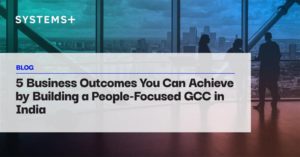
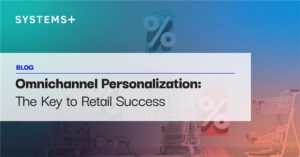
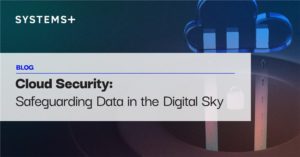
Amazon Web Services
Know MoreAmazon Web Services
Know MoreAmazon Web Services
Know More